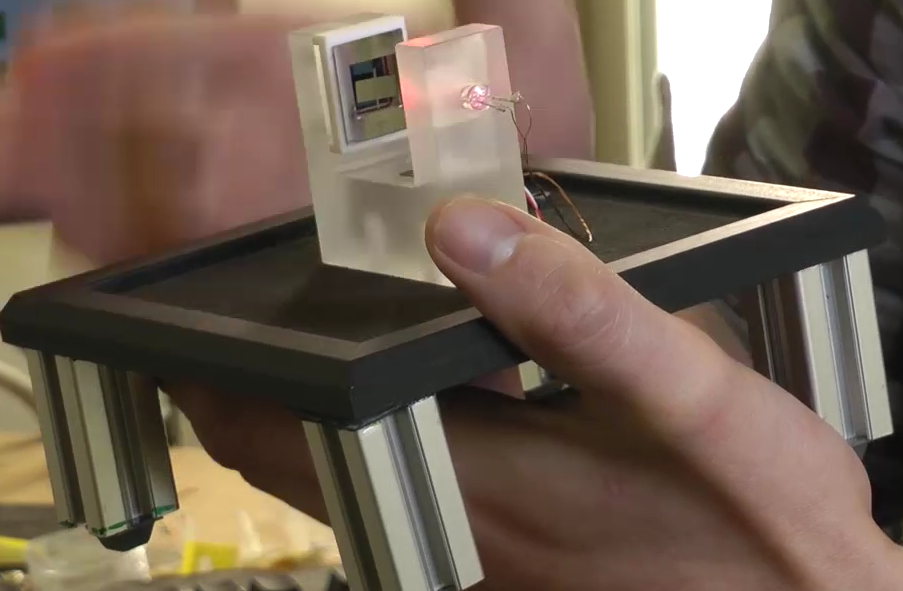Researchers from the University of Glasgow have altered simple smartphone technology to create a sensitive detector that can measure changes in gravity.
The detector, nicknamed “Wee-g,” was built at the University’s James Watt Nanofabrication Centre in collaboration with the School of Physics and Astronomy (Institute for Gravitational Research) and the School of Engineering (Electrical & Nanoscale).

Gravimeters, which measure the gravitational field of the Earth, have been around for many years, however they aren’t quite accessible to everyone due to their high cost and large size.
The Glasgow team found a way to make the device more widespread by using the same inexpensive, mass-produced micro-electromechanical systems (MEMS) that are used in today’s smartphones’ internal accelerometers. The team adapted the technology, though, making it more suitable for their device. The MEMS technology in phones uses stiff and insensitive springs to maintain the orientation of the screen relative to the Earth, but Wee-g uses a silicon spring that is 10 times thinner than a human hair. This allows Wee-g’s 12 mm-square sensor to detect very small changes in gravity.
To test out the device, the researchers used Wee-g to measure the Earth tides from the basement of the University’s Kelvin building. We already know that the gravitational pull of the moon affects the tides of the planet’s oceans, but the moon and the sun also exert a subtle effect on the Earth’s crust known as the Earth tides. In this case, the pull of the sun and the moon displace the crust and create a very slight expansion and contraction of the planet of around 40 cm.
“The Earth tides are a well-established phenomenon, which we’re able to accurately predict using mathematical models,” said Dr. Giles Hammond of the University’s School of Physics and Astronomy. “One of the factors which separates gravimeters from simple accelerometers is stability, allowing users to monitor variations in gravity over the course of several days-weeks. We used our Wee-g system to monitor the Earth tides under Glasgow over the course of several days, and our results aligned perfectly with the variations in gravity the model had predicted.
The team has now displayed that a MEMS device can maintain its stability over a long period of time, and that such a device can easily be built with existing mass-production technology.
“There are a lot of potential industrial applications for gravimeters, but their cost and bulkiness have made them impractical in many situations,” said Richard Middlemiss, Co-author of the paper. “Wee-g opens up the possibility of making gravity measurement a much more realistic proposition for all kinds of industries: gravity surveys for geophysical exploration could be carried out with drones instead of planes; and networks of MEMS gravimeters could be places around volcanoes to monitor the intrusion of magma that occurs before an eruption – acting as an early warning system .”
Next, the team will work to make the device even smaller and more portable, as well as form industrial partnerships to commercially produce the device.


Comments are closed, but trackbacks and pingbacks are open.